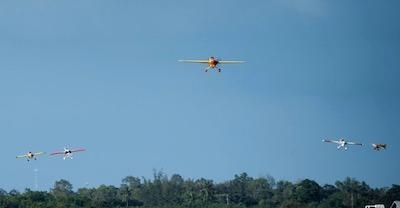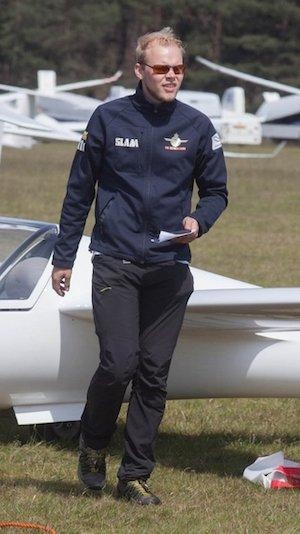Thu, Sep 12, 2019
Team NL Is Throwing Out Conventional Aircraft Design Rules For Air Race E
When it comes to electric aircraft design, all conventional rules can be thrown out the window, according to Team NL. The group of engineering graduate students hopes this fresh approach will bring them to victory at Air Race E in their push to explore concepts that were not possible before.

Rick Boerma has long dreamed of building his own aircraft. By his own admission, he was not sure whether to go with the tried-and-tested technique of thermal combustion or take a novel approach with electric propulsion. The aerospace engineering graduate student, who specialises in structures and materials, finally found a reason to go 100% electric thanks to Air Race E. Not finding a participating team in his area, he opted to form his own, gathering a group of his student friends to build an aircraft “from scratch.”
"The most interesting aspect of electric flight is that conventional rules can be thrown out the window. New concepts can be explored that weren’t possible before," said Boerma, the head of Team NL.
Team NL is a group of engineering graduate students who are designing our own electric aircraft from the ground up specifically for the race. Boerma said their airplane is a conventional low-wing aircraft with two electric motors that power two contra-rotating propellers.

A unique feature of the airplane is that the battery design is no longer driven by the amount of energy required but by the power the batteries can deliver. One important aspect, of course, is obtaining an airworthiness certificate. Team NL says it is in contact with the Dutch authorities to explore its options.
"If we want to reduce the impact of aviation on the environment, electric flight does provide some interesting possibilities, and we’ve already seen some electric aircraft with remarkable performance. However, I’m not sure if it will be a suitable option for large airliners: batteries are too heavy and hydrogen requires too much volume," Boerma (pictured) said. "But, the most interesting aspect of electric flight is that conventional rules can be thrown out the window. New concepts can be explored that weren’t possible before—look at the urban air mobility sector. It’s definitely an interesting time in the aerospace industry."
(Source: Airbus. Images provided)
More News
Its Offerings Are Lighter, Cleaner, and Now Pushing Past 1,000nm on SAF Jet Fuel DeltaHawk’s diesel-powered aircraft lineup has seen incredible upgrades over the last few yea>[...]
The Airplane Experienced A Total Loss Of Engine Power On December 3, 2025, about 1600 central standard time, a Mooney Aircraft Corp. M20K, N57229, was substantially damaged when it>[...]
Make Sure You NEVER Miss A New Story From Aero-News Network Do you ever feel like you never see posts from a certain person or page on Facebook or Instagram? Here’s how you c>[...]
Aero Linx: European Society of Aerospace Medicine (ESAM) As a pan-European, independent forum, it works to promote the safety and health of all persons involved in aviation and spa>[...]
“We are excited to see Wisk achieve this milestone, and I’m so proud of the team that made it possible. The team at Wisk has built advanced technologies across flight c>[...]
 Aero-TV: DeltaHawks Diesel Power Steps Into the Spotlight
Aero-TV: DeltaHawks Diesel Power Steps Into the Spotlight NTSB Prelim: Mooney Aircraft Corp. M20K
NTSB Prelim: Mooney Aircraft Corp. M20K ANN FAQ: Turn On Post Notifications
ANN FAQ: Turn On Post Notifications ANN's Daily Aero-Linx (12.20.25)
ANN's Daily Aero-Linx (12.20.25) Aero-News: Quote of the Day (12.20.25)
Aero-News: Quote of the Day (12.20.25)




